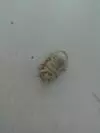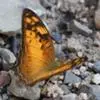Use the Insect Encyclopedia
to Identify Your Bug
Insect identification is crucial in the xeric garden.
There are good bugs (called predators) that prey on insect pests such as aphids, and there are beneficial insects in the form of bees, butterflies, wasps and many others that perform the important role of pollinators.
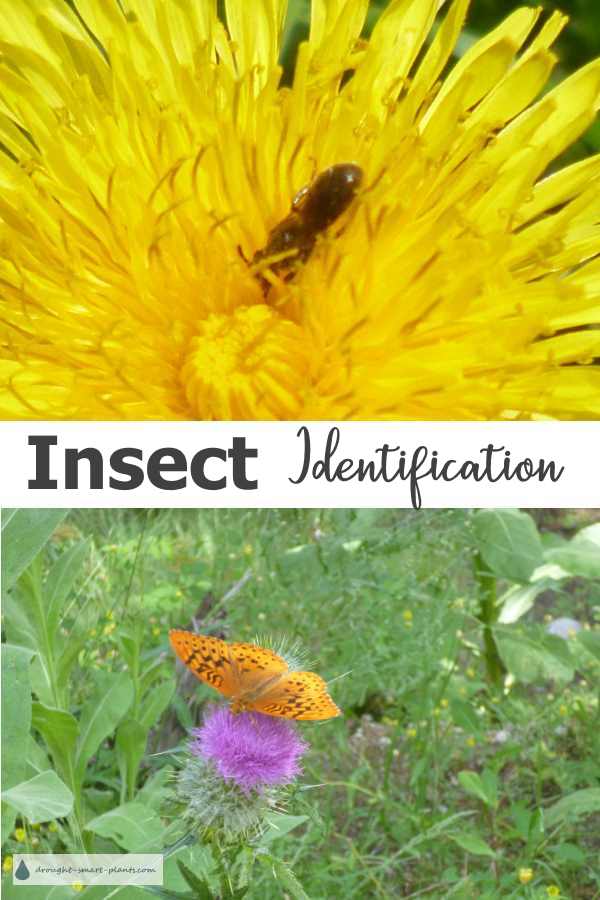
There are many pest species that destroy our plants.
It is a shame if you accidentally kill off the useful insects in your efforts to control what you think is a pest.
To identify insects it’s important to be really observant.
Some of the differences between beneficial insects and insect pests are minute and it’s easy to make a mistake and hand pick some Monarch butterfly larvae (caterpillars) if you’re not aware of their scary appearance.
Finding out what the different forms of each life cycle look like will help you avoid this.
My golden rule is: when in doubt, leave unknown insects alone.
I’ve been in the unfortunate position of killing what I thought were a horrible pest, only to find later that I was exterminating a whole generation of Swallowtail butterfly larvae!
That was a long time ago, but it taught me that nature sometimes knows best; stand back, identify insects and research them to see if they are useful to the garden in particular, and nature in general, then take action if it’s needed.
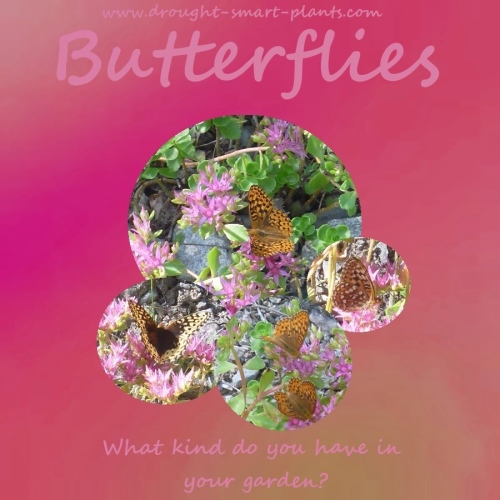
The ultimate of all the butterflies in my garden is the Great Spangled Fritillary – and not just for that great name. The lacy edged brown female is totally different, being about one third again as big as the orange and rusty colored males.
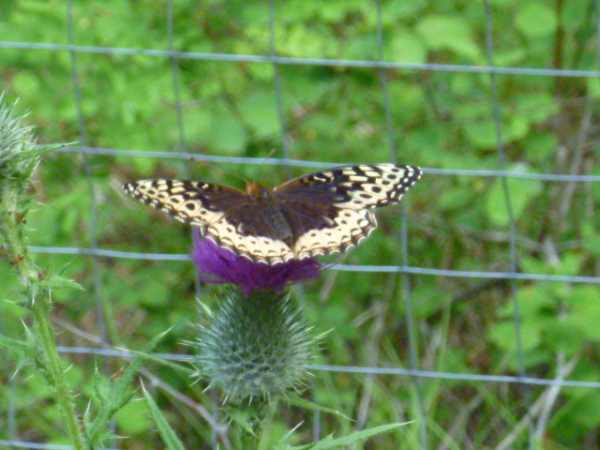
This gorgeous brown butterfly visited my garden only one time, and it’s taken a long time to verify its identity.
I’m thrilled to find out after submitting this picture to Bamona, the Butterflies and Moths of North America website that this is actually Speyeria cybele – in this case a female Great Spangled Fritillary butterfly. They also sometimes are listed as their own species, S. leto.
You can see more information about this species in this butterfly sighting record.
The email that I received to notify me of the identification said:
“This is a female; very different in appearance from the male of this species. Many people think that this butterfly is a subspecies of S. cybele; while others think it is best treated as a distinct species; S. leto.”
You can bet that I’ll be checking the leaves of all the native Viola species to see if I can find some caterpillars in the spring. Update: July 2012; I’ve had one of these visit again – the males show up in droves and I’ve only ever seen one female at any one time.
In most cases, I’ve noted that leaving nature alone to deal with pests adds a whole new level of appreciation for the intertwined and convoluted ecosystem.
Some organic gardeners have observed that the only plants that get infested with pest insects are unhealthy in some way and actually attract the pests – inspiring the thought that to protect plants from pests you have to feed them the correct type of plant food – the best of which is compost.
Bug identification starts with noting how many legs the insect has; insects have six legs, if it has more, it’s an arachnid, or spider. See the Spider Identification guide for more on identifying spiders.
Insect monitoring is essential for IPM, or Integrated Pest Management.
This is a system where the pest populations are checked frequently, and action is only taken once the numbers of pests and the damage to a crop reaches a certain level. In IPM, the solution with the least environmental harm is used first, with the correct levels.
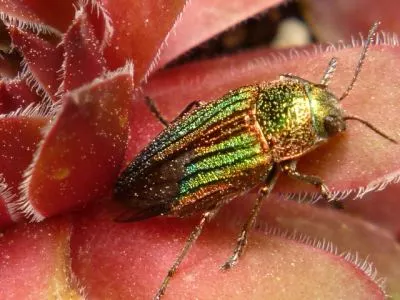
Predatory beneficial insects can be released to attempt a very environmentally friendly solution. If that doesn’t work efficiently enough, then other methods are used as needed.
A small amount of damage is acceptable in most crops, and the gardening community accepts that even beneficial insects must eat – so leaving a few aphids to feed ladybugs or syrphid flies promotes a healthy habitat for the rest of the creatures.
To identify your insects check through the Insect Encyclopedia, and if you don’t see it there post some pictures and tell a bit about your bug –
- what type of plant is it on?
- Size?
- Is it winged?
- What colours?
- Anything else you can tell me that will help identify your insects.
Insect Encyclopedia
Looking for bug identification? Check to see if your bug is already entered in the Insect Encyclopedia – if not, upload some pictures, and I’ll try and identify your bug.
Is your bug in the Insect Encyclopedia?
Scroll through the entries below…
tiny black flying bug
These tiny black flying bugs have been flying around the inside of the house. I just noticed these tiny black flying bugs gather around the soil in my …
Mourning Cloak Caterpillar
The mourning cloak butterfly is one of the first to emerge in the spring; any warmer days trigger the end of their dormancy. These large butterflies …
Million legged crawling bug
The Bug or insect has many legs on both sides, and crawls across the walls, and ceiling. People call them million legged bugs around here. They are fast …
bugged by these bugs
white insects lots of them,feeds on trees, want to enter inside the house. if stepped on leaves yellowish liquid. Hi Dilawar, there is no way for me …
Anise Swallowtail Butterfly
After the first few warm days in May, you can expect to see brand new adult Anise Swallowtail butterflies, freshly hatched. They visit anything that’s …
Fritillary Butterflies
Finally, I heard back from Bamona, Butterflies and Moths of North America , about my sighting of this incredible butterfly. I’ve been thinking it was …
there on my tomato plants!!!!
they are tiny (the size of a dull, skinny pencil lead) insects almost beetle like in looks. they are a reddish brown color with a black head and a black …
Beautiful Butterfly near Neer Waterfalls Rishikesh India
Can’t say Drought Smart Plants reply: Beautiful butterfly – I’m not familiar with butterflies that would be local to your area – however, many …
Milbert’s Tortoiseshell Butterfly
This is a pretty distinguishable butterfly that you might see on your lawn, especially if you garden naturally and the lawn includes some dandelions, clover …
Wooly Bear Caterpillar
Wooly Bear Caterpillars are usually seen towards the very end of summer – if there are few warm days, these fuzzy orange and black striped caterpillars …
Twin Spotted Sphinx Moth
This is one of the larger moths around my place – if I leave the porch light on too late in the evening, I’m likely to find one stranded on the porch in …
Mourning Cloak Butterfly
This butterfly is unmistakable – once you’ve seen one, you remember them forever. They have dark mahogany purplish wings, with a distinct pale yellow …
Sphinx Moth Caterpillar
This is the biggest green caterpillar I’ve ever seen – it’s got the most beautiful violet and white stripes on its sides, and a brown coloured horn or …
Butterflies
If you had to explain butterflies to someone who had never seen one, or a garden of flowers, how would you describe one? They are brightly coloured, …
Locust
Locusts are related to crickets and grasshoppers , as you may be able to tell from their large back legs – if you can see them. Most locusts are masters …
Grasshopper
Grasshoppers are voracious pests of many gardens, appearing the late summer, and particularly bad in years of extreme drought. As if the hot sun parching …
Comma
Comma butterflies are amongst the brightest, but they’re also the most elusive, rarely stopping in one spot for long, and jumping nervously at any movement …
Bald Faced Hornet
This wasp is very distinctive – large in size and extremely protective of their paper nest, they patrol low to the ground looking for their insect prey. …
Syrphid Flies
Syrphid Flies or Hover Flies use mimicry to scare off those that could predate them – some of them copy a bee or wasps movements and colouring exactly. …
Dragonflies
Dragonflies look pretty dangerous – they are big and fast, and change directions on a dime. Imagine many millennium ago when they were the size of a Volkswagen …
Wasps
There are many different species of wasps – we’re used to seeing the hornets and yellow jackets, but if you’re observant, you’ll see many others. Some …
Bees
There are many kinds of bees in the xeric garden – the types of drought tolerant plants that are especially useful for being able to grow in challenging …
Dogbane Leaf Beetle
This shiny rounded beetle is pretty innocuous – it finds scrumptious goodies in the grass, feeds on Dogbane and other milkweed plants and generally behaves …
Pine White Butterfly
Another white butterfly, but this one is a native type. Varying in numbers, this one can sometimes have a population explosion, and cause defoliation …
Beetles There are many ground beetles, darkling beetles, undertaker beetles and so on. They perform an important role in the garden; existing on carrion, carcases …
Robber Flies
These odd looking insects look like a little helicopter, and fly in a similar fashion. Quick, maneuverable and accurate – which they need to be to …
Blister Beetle
Once you see these, you’ll never forget them – if you touch them you’ll learn first hand why they’re called Blister Beetles. They can give you or your …
White Admiral Butterfly
I’m not sure why a black butterfly would be called a ‘White’ Admiral – it must have to do with the white stripes on its wings. This crisply attired …
Cabbage White Butterfly
Although pretty in flight, if you’re a grower of cabbages, broccoli or any other brassica, this butterfly will get your blood boiling. This European …
Sulphur Yellow Butterfly
This butterfly reminds me of a lady going to tea in a lemon coloured chiffon dress. They flit very nonchalantly from bloom to bloom, seldom alighting …
Swallowtail Butterfly
The vividly striped black and yellow swallowtail butterfly is probably the most easily recognizable of all the big butterflies in southern British Columbia. …
Cricket
There are many kinds of crickets – many are predatory, making their homes in dark damp places (such as root cellars) and prey on live insects in some cases, …
Lacewing
Lacewings, despite their delicate appearance, are an even match with ladybugs for their voracious appetite for aphids. They are seen often hanging out …
Ladybug
Ladybugs, or Ladybird beetles as they are sometimes known are one of the most easily recognized garden ally. The adult beetle is a voracious predator …


